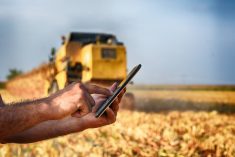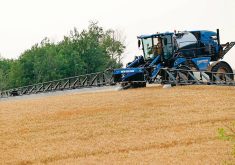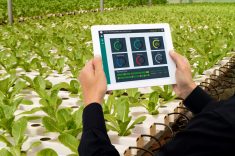Whether to spend money on outer space exploration or apply it to solve serious problems on Earth is a contentious debate. But one argument in favour highlights benefits that do, in fact, help study, monitor and address serious concerns like climate change and food production.
As access to space increases, the potential for terrestrial benefits grows exponentially.
For example, agriculture has been improved significantly through the application of space-based advances to terrestrial challenges. It is now increasingly likely that food items have been produced with the assistance of space-based technologies, like freeze-dried foods, or through use of crop monitoring from space-based observatories.
Read Also

Calling all Co-operator readers
Hey farmers, we want to hear your Manitoba Co-operator stories: the articles that stuck out, the farm history you watched on our pages.
Satellite monitoring is arguably the most realized benefit of space for farming. Like mindful eyes in the sky, satellites watch over farmlands day and night. Specialized sensors on relevant satellites monitor various parameters relevant to agriculture.
Sensors monitoring soil moisture can tell us when and how fast soils are drying, helping direct more efficient irrigation on a regional scale. Weather satellites help predict drought, floods, precipitation patterns and plant disease outbreaks.
Satellite data helps us predict food insecurity threats or crop failures.
It’s not only lifeless machines that dwell in space. Humans have managed to survive and grow plants in low-Earth orbit aboard several spacecraft and stations.
Space biologist Anna-Lisa Paul describes plants as being able to “reach into their genetic toolbox and remake the tools they need” to adapt to the novel environment of space. The new tools and behaviours expressed by plants under spaceflight conditions could be used to solve challenges facing crops on Earth.
Researchers at NASA sent cotton seeds to the International Space Station to understand how cotton roots grow in the absence of gravity. The findings will help develop cotton plant varieties with deeper root systems to access and absorb water more efficiently from soil in drought-prone areas.
Soon, humans will go to the moon and eventually to Mars. While there, astronauts will have to grow their own food.
Space agencies have been working on specialized systems for plant cultivation in space. These systems are containers that can control the internal environment and grow plants without soil under LED lights. NASA’s research in controlled environment systems to grow plants was foundational in developing the modern-day vertical farm sector — indoor farms that grow crops in stacks without soil under the purple haze of LEDs.
Now a burgeoning industry, vertical farms are churning out enormous volumes of fresh and healthy leafy crops with a fraction of the water and nutrients that would be used in land-based farm systems. Vertical farms can be set up within cities, right where the demand lies, thereby cutting the need for long-distance transport.
As crops are grown indoors in controlled environments, vertical farms can substantially reduce reliance on herbicides and pesticides, while recycling water and preventing nutrient runoff.
Considering the constraints of space, crop production techniques must be more energy-efficient and require minimal human input. Crops need to also be nutrition-rich, with the ability to withstand high-stress environments. These features are also desirable for crops on Earth.
Scientists are developing a more resource-efficient potato crop where the whole plant can be consumed, including roots, shoots and fruits. Such crops will play a pivotal role in addressing food and nutritional security on Earth and in space.
Space exploration has served as a major driver for technological advances. The renewed interest in space can only benefit agriculture here on Earth.
– Ajwal Dsouza is a PhD candidate, Environmental Sciences, University of Guelph and Thomas Graham is assistant professor, Environmental Sciences, University of Guelph.















